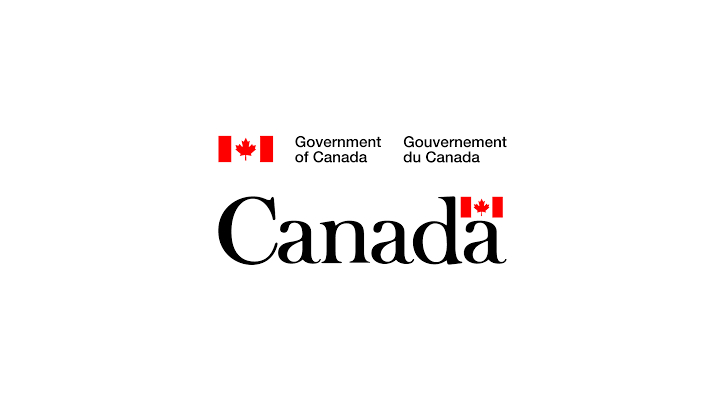Minister Wilkinson Announces New Investments in Critical Minerals in Saskatchewan
August 15, 2024

Saskatchewan Research Council to advance bastnaesite processing and study of critical minerals with support from the Government of Canada
Saskatchewan is internationally known for mining and exploration, and more recently getting recognition for critical minerals, including rare earth elements, which are used in electric vehicles (EVs), wind turbines, everyday electronics, and industrial uses. As the demand for critical minerals to power the clean economy is expected to double by 2030, according to the International Energy Agency, there is an enormous economic opportunity for Saskatchewan and for Canada to seize. Since 2020, the Saskatchewan Research Council (SRC) has taken the lead in processing and commercializing value-added products using rare earth elements throughout the development of its Rare Earth Processing Facility in Saskatoon, the first of its kind in Canada.
On August 14, the Honourable Jonathan Wilkinson, Minister of Energy and Natural Resources, on behalf of the Honourable Dan Vandal, Minister of PrairiesCan, announced new funding of over $16 million to support SRC in Saskatoon, Saskatchewan. This funding builds on earlier support of nearly $13.5 million from PrairiesCan and Natural Resources Canada (NRCan) for SRC to establish its Rare Earth Processing Facility and develop new rare earth mineral processing technologies.
This announcement includes $15.96 million through PrairiesCan to enable SRC to acquire bastnaesite (a type of ore containing rare earth elements) from Canadian sources and create new domestic capacity for bastnaesite processing, which will be integrated into SRC’s Rare Earth Processing Facility. SRC will process bastnaesite ore acquired from Vital Metals Ltd.’s Canadian operations to produce a mixed rare earth product, which will be further processed using SRC’s solvent extraction and metal smelting technology to produce rare earth metals. SRC will also collaborate with a local educational institution to develop and deliver a training program for Indigenous students to operate bastnaesite processing equipment.
The investment of $209,330 from NRCan, under the Critical Minerals Geoscience Data (CMGD) Initiative will help SRC create a publicly available database of mineral characteristics, which will expand the understanding of critical mineral deposits in Canada and reduce mining waste. The new data will help make better predictions about the types of deposits that can be identified by sensor-based sorting, reducing the costs of developing critical mineral deposits into mines and the energy consumption and waste associated with these mines.
The Government of Canada, through the Canadian Critical Minerals Strategy, is making crucial investments in critical minerals, and seizing the economic opportunity the clean economy presents for Saskatchewan and for Canada – in line with our goal to become a critical minerals supplier of choice for the democratic world and create good jobs and economic opportunities for generations to come.
Quotes
“Our government is investing in the economic opportunities presented by our critical minerals wealth, ensuring that Canadians will benefit from the mining, processing and sale of rare earth elements and other critical minerals through the creation of good jobs, expansion of the mining sector, and prospects for future innovations and reduced emissions.”
–The Honourable Jonathan Wilkinson, Minister of Energy and Natural Resources
“Investing in regional strengths like mining, exploration, and mineral processing helps us build a solid path to a strong sustainable future for all Canadians. Saskatchewan Research Council’s Rare Earth Processing Facility plays an important role in our government’s plan to establish a domestic rare earth supply chain that grows our economy and creates good jobs for Canadians.”
–The Honourable Dan Vandal, Minister responsible for PrairiesCan
“This investment will further advance Saskatchewan’s prominent role on the global stage as a reliable supplier of safe and sustainable rare earths that the world needs for energy production. The acquisition of bastnaesite from Northwest Territories secures the necessary resources for SRC’s Rare Earth Processing Facility to produce additional rare earth metals. This will help ensure critical mineral security for Canada’s allies and partners while preventing these strategic critical minerals from being sent to overseas jurisdictions that threaten our national security.”
–The Honourable Jeremy Harrison, Minister Responsible for Saskatchewan Research Council
“The funding announced by PrairiesCan means SRC will be able to expand its current Rare Earth Processing Facility to process a wider range of rare earth minerals – developing additional capacity and knowledge within Canada for this burgeoning industry. SRC’s Rare Earth Processing Facility will soon be operational, making the province a domestic rare earth technology hub and an essential part of Canada’s critical minerals supply chain.”
–Mike Crabtree, President and CEO, Saskatchewan Research Council
Quick Facts
- The rare earth metals produced from SRC’s recent purchase of bastnaesite alone could be used to power 62,500 electric vehicles.
- The Government of Canada has identified 34 critical minerals, and 27 of those can be found in Saskatchewan.
- Canada has some of the largest known reserves and resources of rare earths, estimated at over 14 million tonnes in 2021.
- Mineral exploration expenditures in Saskatchewan hit a 10-year high in 2023, with uranium exploration leading the way, demonstrating the region’s high global attractiveness for investment (Saskatchewan Ministry of Energy and Resources Exploration and Development Highlights Report, 2023).
- Today’s announcement includes one of the first investments representing a greater collaboration called for in the new Framework to Build a Green Prairie Economy. The Framework is a long-term commitment to better coordination among federal departments, other levels of government and prairie partners on their priorities, to seize opportunities for economic growth and more good paying jobs across the Prairies.
- The Critical Minerals Geoscience and Data (CMGD) initiative aims to strengthen Canadian critical minerals supply chains and support sustainable development of six priority minerals that are essential to key industries and national security (e.g. batteries, energy, defense, infrastructure). The CMGD provides funding to advance the availability of valuable data and insights on the location, quality, and economic feasibility of critical minerals resources.
- Budget 2021 provided $79.2 million to NRCan to enhance the quality and availability of data and digital technologies to support geoscience and mapping that will accelerate the efficient and effective development of Canadian critical minerals value chains, including by identifying critical minerals reserves and developing pathways for sustainable mineral development.
- In 2024, Canada surpassed China to take the number one spot as the country with the most potential to build a secure, reliable, and sustainable EV supply chain.
Related Story
Government of Canada Once Again Reinforces Quebec’s Key Role in the Electric Vehicle Supply Chain
The future of Canada’s transportation sector is electric. That’s why we’re prioritizing the development of our own complete domestic battery ecosystem, supporting clean technologies, and working with world-leading companies and industries that will help us meet our net-zero emissions goal by 2050.





